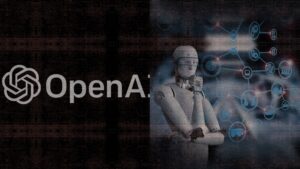The AI revolution is here, according to more than half of traders who believe ChatGPT might be the fastest-growing app in history and have the biggest impact on investing. The ChatGPT reduces the time required to create, manage, and disseminate information. In this article, I will let you know a little bit about ChatGPT and will discuss how this technology has applications in general life as well as in engineering.
Table of Contents
What is the ChatGPT?
Chat GPT is a large language model developed by Open AI. It uses machine-learning techniques to generate human-like text based on a given prompt or context. The model is trained on a massive dataset of text, which allows it to generate a wide variety of responses, including natural-sounding text, code, and technical documentation.
ChatGPT (short for “Conversational Generative Pre-training Transformer”) is a large language model developed by OpenAI.
What is the History?
The history of ChatGPT starts with the development of the GPT (Generative Pre-training Transformer) model, which was first introduced by OpenAI in 2018. GPT was trained on a dataset of over 40 GB of text and was able to generate human-like text based on a given prompt. The original GPT model was able to perform well on a wide range of language tasks, such as text completion and machine translation.
In 2019, OpenAI released an updated version of the model, called GPT-2, which was trained on a much larger dataset of over 570 GB of text. This made the model significantly more powerful, and it was able to perform well on a wide range of tasks, including language translation, question answering, and text summarization.
ChatGPT is the further development of the GPT model which is based on GPT-2, which is trained to generate more natural-sounding text and to model conversational data. ChatGPT is capable of conversing on a wide range of topics, such as current events, sports, and entertainment. It can also generate text that is suitable for different styles, such as formal or informal.
Application of ChatGPT
In general, ChatGPT is used in a wide range of applications, such as:
- Text completion and generation
- Content creation
- Language Translation
- Personal assistance
- Virtual customer support
- Chatbot development
- Social media automation
- Educational purpose
- Technical documentation and coding
- Simulation and modeling
- Troubleshooting
- Research and report writing
- Maintenance and repair
- Quality control
- Project management
- It can be used in the fields of education, entertainment, customer service, software development, research, and more.

How can use ChatGPT in general life?
In general life, ChatGPT can be used for a variety of tasks such as:
- Text completion: Chat GPT can be used to complete sentences, paragraphs, or even entire documents.
- Content creation: Chat GPT can be used to generate creative writing, such as stories, poems, and articles.
- Language translation: Chat GPT can be used to translate text from one language to another.
- Personal Assistance: Chat GPT can be used as a personal assistant, answering questions, scheduling appointments, and providing information.
- Virtual customer support: Chat GPT can be used to provide virtual customer support by answering common questions, troubleshooting problems, and providing help.
- Chatbot development: ChatGPT can be used to develop chatbots for a wide range of applications, such as customer service, information retrieval, and lead generation.
- Social Media Automation: Chat GPT can be used to generate automated responses on social media platforms, such as Twitter or Instagram.
- Educational purpose: Chat GPT can be used as an educational tool to generate exercises, quizzes, and other learning materials.
Potential applications of ChatGPT in engineering:
There are several potential applications for ChatGPT in engineering, including:
- Technical documentation: Chat GPT can be trained to generate technical documentation, such as user manuals and installation guides, which can save engineers time and effort.
- Code generation: Chat GPT can be trained to generate code, making it a useful tool for software engineers.
- Simulation and modeling: ChatGPT can be trained to assist with simulation and modeling tasks, such as predicting the behavior of a system or optimizing design parameters.
- Troubleshooting: Chat GPT can be trained to provide solutions for common engineering problems, such as diagnosing and fixing equipment issues.
- Research: ChatGPT can be used to assist with research tasks, such as literature reviews, data analysis, and report writing.
- Maintenance and repair: Chat GPT can be trained to assist with maintenance and repair tasks, such as providing step-by-step instructions for fixing equipment or identifying the root cause of a problem.
- Quality control: Chat GPT can be trained to assist with quality control tasks, such as identifying defects in products or detecting patterns in data.
- Project management: ChatGPT can be trained to assist with project management tasks, such as creating project plans, tracking progress, and identifying potential risks.
FAQ
Question: What does Chat GPT can do?
Answer: A well-known program that responds to inquiries in uncannily human ways.
Question: Is ChatGPT free?
Answer: Although it now costs the company a few pennies each time someone uses it, it is currently free for users.
Question: What type of AI is Chat GPT?
Answer: large language models
Question: Who invented Chat GPT?
Answer: Developed by San Francisco-based startup OpenAI, Chat GPT is an AI chatbot.
Question: How many parameters does Chat GPT have?
Answer: 175 billion parameters


Pretty! This has been a really wonderful post, many thanks for providing details of Bodrum all on 4.
This is really interesting, You’re a very skilled blogger. I’ve joined your feed and look forward to seeking more of your magnificent post. Also, I’ve shared your site in my social networks!
This is my first time pay a quick visit at here and i am really happy to read everthing at one place
Great information shared.. really enjoyed reading this post thank you author for sharing this post .. appreciated